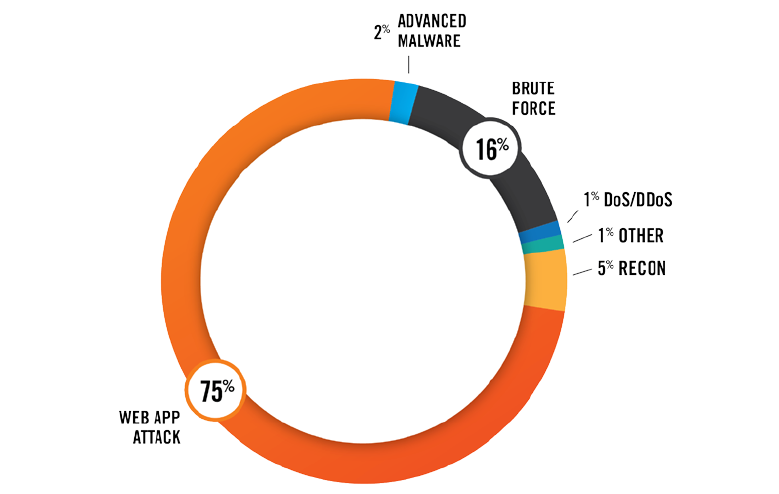Public cloud environments are more secure than private and hybrid clouds and on-premises networks, according to data collected by cloud security solutions provider Alert Logic over a period of 18 months.
Alert Logic’s 2017 Cloud Security Report is based on the analysis of more than 2.2 million security incidents captured by the company’s products from more than 3,800 customers between August 2015 and January 2017.
The data shows that organizations using public cloud environments have encountered, on average, 405 security incidents, while hybrid networks have experienced nearly 1,000 incidents. Hosted private cloud environments and on-premises networks experienced 684 and 612 incidents, respectively.
In all cases, the most common type of security incident was SQL injection reconnaissance, followed by Joomla web application attacks and SQL injection. Web application attacks are by far the most common, followed by brute force, reconnaissance, and advanced malware attacks.

In the case of web attacks, the most common, accounting for 80 percent of incidents, are SQL injection and remote code execution. The most targeted are content management systems (CMSs) and e-commerce platforms such as Joomla, WordPress, Apache Struts and Magento.
Alert Logic observed more than 630,000 SQL injection attempts, including a few hundred attacks that were complex and likely launched by skilled and determined threat actors.
As for brute-force attacks, WordPress was the most targeted, followed by MS SQL and SSH. While malware attacks represented only 2 percent of the incidents observed by Alert Logic, the company said it had seen an increase in server-side ransomware infections.
“To be fair, our data set does not conclusively prove that public clouds are ‘more secure,’ if such a question can even be framed effectively or answered definitively,” explained Misha Govshteyn, founder of Alert Logic. “But we do know that within our customer base, we less frequently see malicious activity in public-cloud environments, even though web applications are one of the most dominant workloads there. And we know that web apps account for the highest share of attacks leading to breaches.”
“For the moment, even the public cloud is not so secure that there is nothing to worry about; far from it,” Govshteyn added. “While we saw close to 37% more incidents in on-premises data centers, this still leaves each public cloud deployment to withstand just over (on average) around 400 incidents in the 18-month period covered by this report. And even lower incident rates do not necessarily translate to lower risk – especially when, as is increasingly more common, businesses rely on the public cloud to handle their highest value assets.”
Related Reading: Cloud Security Firm Netskope Raises $100 Million
Related Reading: RedLock Emerges from Stealth With Cloud Security Platform
Related Reading: Cloud Security Firm ShieldX Emerges From Stealth












